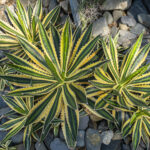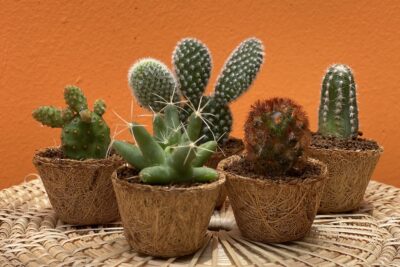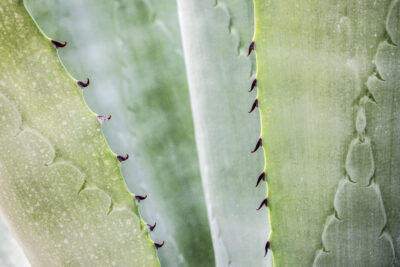
Succulent Care: A Guide to Cliff Cotyledon and Crassulaceae

Succulents have become increasingly popular in recent years, with their unique and stunning appearance adding a touch of nature to any indoor or outdoor space. Among the vast variety of succulents, two types that stand out are the Cliff Cotyledon and Crassulaceae. These succulents are known for their ability to thrive in harsh environments and their eye-catching, fleshy leaves.
We will delve into the world of succulent care, specifically focusing on the Cliff Cotyledon and Crassulaceae. We will explore the ideal growing conditions for these succulents, including light, temperature, and watering requirements. Additionally, we will discuss common issues that succulent owners may encounter and provide tips for overcoming them. Whether you are a seasoned succulent enthusiast or just starting your succulent journey, this guide will equip you with the knowledge and tools necessary to successfully care for Cliff Cotyledon and Crassulaceae.
- Water your succulents sparingly to prevent root rot
- Place your succulents in a location with plenty of bright, indirect sunlight
- Use well-draining soil specifically formulated for succulents
- Avoid over-fertilizing your succulents, as they are prone to nutrient burn
- Provide adequate air circulation to prevent the growth of mold and mildew
- Protect your succulents from extreme temperatures, especially frost
- Prune any dead or damaged leaves to promote healthy growth
- Avoid overcrowding your succulents to prevent competition for resources
- Monitor for pests such as mealybugs or spider mites and take appropriate action
- Repot your succulents every 1-2 years to refresh the soil and encourage growth
- Frequently Asked Questions
Water your succulents sparingly to prevent root rot
One of the most crucial aspects of succulent care is proper watering. Succulents, including the Cliff Cotyledon and Crassulaceae varieties, have adapted to survive in arid conditions by storing water in their leaves, stems, and roots. Therefore, they do not require frequent watering like other houseplants.
Overwatering is one of the leading causes of root rot in succulents. Excess moisture in the soil can lead to the roots becoming waterlogged and susceptible to fungal and bacterial infections. To prevent root rot, it is essential to water your succulents sparingly and follow a few guidelines:
- Check the soil moisture: Before watering your succulents, always check the moisture level of the soil. Stick your finger about an inch into the soil; if it feels dry, it's time to water.
- Water deeply but infrequently: When you do water your succulents, ensure that you give them a thorough watering. This means allowing water to penetrate the entire root zone. However, it's crucial to let the soil dry out completely before watering again. Succulents prefer a cycle of dry and wet rather than being consistently damp.
- Use well-draining soil: Succulents thrive in soil that allows excess water to drain away quickly. It is recommended to use a well-draining succulent soil mix, which typically consists of a combination of potting soil, perlite, and sand. This ensures that water does not accumulate around the roots, reducing the risk of root rot.
- Water from the bottom: Another effective way to water succulents is by using the bottom-watering method. Fill a tray or saucer with water and place the pot in it. The plant will absorb water through the drainage holes, allowing the roots to take up moisture without sitting in water for an extended period.
- Adjust watering frequency with the seasons: During the active growing season, succulents may require more frequent watering. However, in cooler months or during dormancy, they need less water. Monitor your succulents closely and adjust your watering schedule accordingly.
By following these watering guidelines, you can help your succulents thrive while avoiding the common problem of root rot. Remember, less is more when it comes to watering succulents!
Place your succulents in a location with plenty of bright, indirect sunlight
 Can Succulents Be Revived After Drying Out?
Can Succulents Be Revived After Drying Out?When it comes to caring for your succulents, providing them with the right amount of sunlight is crucial. Succulents thrive in bright, indirect sunlight, so it's important to find the perfect spot for them in your home or garden.
Choose a location that receives at least six hours of sunlight per day. It's best to avoid placing your succulents in direct sunlight, as this can cause sunburn and damage their delicate leaves. Instead, opt for a spot with filtered light or a bright, sunny window that doesn't receive intense afternoon sun.
If you're growing succulents indoors, consider placing them near a south-facing window or using grow lights to provide them with the necessary light. Keep in mind that different succulent species have varying light requirements, so it's a good idea to research the specific needs of the succulent you're caring for.
Remember to rotate your succulents regularly to ensure even growth and prevent them from leaning towards the light source. This will help them maintain a more symmetrical and attractive appearance.
Overall, finding the right balance of sunlight for your succulents is key to their health and growth. As long as you provide them with bright, indirect light, your succulents will thrive and reward you with their beautiful and unique foliage.
Use well-draining soil specifically formulated for succulents
When it comes to succulent care, one of the most important factors to consider is the type of soil you use. Succulents, including Cliff Cotyledon and Crassulaceae, thrive in well-draining soil that allows excess water to flow through easily. This prevents the roots from sitting in soggy conditions, which can lead to root rot and other issues.
It's highly recommended to use a soil specifically formulated for succulents. These soils are typically a mix of organic matter, such as compost or peat moss, and inorganic matter, such as perlite or sand. The organic matter helps retain some moisture, while the inorganic matter promotes drainage.
 Can Repotting Revive a Dead Succulent?
Can Repotting Revive a Dead Succulent?When selecting a soil mix, look for those labeled as "succulent soil," "cacti mix," or "well-draining soil." Alternatively, you can create your own mix by combining equal parts of regular potting soil, perlite, and coarse sand.
Remember, the key is to avoid using heavy or compacted soil that retains moisture for too long. This can lead to overwatering and root problems, which succulents are particularly sensitive to.
Water sparingly and avoid overwatering
Proper watering is crucial for the health of your Cliff Cotyledon and Crassulaceae succulents. Succulents are adapted to survive in arid environments, so they have a unique ability to store water in their leaves and stems.
When watering your succulents, it's important to strike a balance between providing enough moisture for the plants to thrive and avoiding excessive watering that can lead to root rot.
As a general rule, wait until the soil is completely dry before watering again. This usually translates to watering once every 1-2 weeks, depending on the climate and humidity levels. However, it's always best to check the moisture level by sticking your finger into the soil about an inch deep. If it feels dry, it's time to water.
When watering, thoroughly saturate the soil until you see water draining out from the bottom of the pot. Allow the excess water to fully drain before placing the pot back in its saucer or decorative container. Avoid leaving the succulent in standing water, as this can lead to root rot.
It's important to note that overwatering is one of the most common mistakes in succulent care. These plants are adapted to periods of drought, so they can tolerate slightly underwatering better than overwatering.
 How to Safely Ship a Succulent: Tips for Mailing Plants
How to Safely Ship a Succulent: Tips for Mailing PlantsProvide ample sunlight for optimal growth
Succulents, including Cliff Cotyledon and Crassulaceae, thrive in bright sunlight. They are naturally adapted to receive direct sunlight for several hours a day.
When growing succulents indoors, it's important to place them in a location that receives bright, indirect sunlight. A south-facing window is often the best choice. If a south-facing window is not available, consider using grow lights to supplement the light requirements.
When growing succulents outdoors, choose a spot that receives at least 6 hours of direct sunlight per day. However, be cautious of intense afternoon sun in hot climates, as it can scorch the leaves of some varieties. Providing some shade during the hottest part of the day may be necessary in such cases.
Keep in mind that succulents will stretch and become leggy if they don't receive enough sunlight. This can lead to weak and floppy growth. If you notice your succulents stretching, it's a sign that they need more light.
Avoid over-fertilizing your succulents, as they are prone to nutrient burn
When it comes to caring for your succulents, it is important to remember that less is more, especially when it comes to fertilizing. Succulents, including the Cliff Cotyledon and Crassulaceae varieties, are known for their ability to thrive in nutrient-poor soil. In fact, over-fertilizing can actually harm these plants, leading to a condition known as nutrient burn.
Nutrient burn occurs when succulents are exposed to high levels of fertilizer, causing an imbalance in their delicate nutrient uptake. This can result in leaf discoloration, wilting, or even the death of the plant. To prevent nutrient burn, it is crucial to follow a few guidelines when it comes to fertilizing your succulents.
Choose a balanced fertilizer
When selecting a fertilizer for your Cliff Cotyledon and Crassulaceae succulents, opt for a balanced formula with equal amounts of nitrogen (N), phosphorus (P), and potassium (K). This will ensure that your plants receive a well-rounded mix of nutrients without overwhelming them.
 Succulent Transplant Shock: Causes, Symptoms, and Solutions
Succulent Transplant Shock: Causes, Symptoms, and SolutionsUse a diluted solution
Instead of applying fertilizer at full strength, it is recommended to dilute it with water. A general rule of thumb is to mix the fertilizer at half the recommended strength on the packaging. This allows for a more gradual release of nutrients and reduces the risk of nutrient burn.
Fertilize during the growing season
Succulents have a natural growth cycle, with the majority of their growth occurring during the spring and summer months. It is during this time that they will benefit most from fertilizer. Avoid fertilizing during the dormant winter period, as succulents require less nutrients during this time.
Apply fertilizer sparingly
Remember, succulents are adapted to survive in nutrient-poor environments, so they require minimal fertilization. It is best to under-fertilize than to over-fertilize. Apply the diluted fertilizer solution sparingly, ensuring that it is evenly distributed around the base of the plant.
By following these guidelines, you can ensure that your Cliff Cotyledon and Crassulaceae succulents receive the necessary nutrients without risking nutrient burn. Remember, a little goes a long way when it comes to fertilizing these resilient plants!
Provide adequate air circulation to prevent the growth of mold and mildew
Adequate air circulation is crucial for the proper growth and health of succulents, including cliff cotyledon and crassulaceae. Without proper airflow, these plants are at risk of developing mold and mildew, which can lead to rot and other detrimental consequences.
To ensure sufficient air circulation, there are a few key steps you can take:
 Caring for Succulents Planted in a Fire Stick: A Comprehensive Guide
Caring for Succulents Planted in a Fire Stick: A Comprehensive Guide- Position your succulents - Place your cliff cotyledon and crassulaceae plants in an area that receives good airflow. Avoid crowding them together too closely, as this can impede air movement.
- Use a fan - If you notice stagnant air around your succulents, especially in an indoor environment, consider using a small fan to promote air circulation. Set it to a low setting to avoid excessive drying of the plants.
- Remove surrounding obstacles - Ensure that there are no objects blocking the airflow around your succulents. Remove any items that may hinder the movement of air, such as curtains or furniture.
- Provide proper spacing - When planting succulents outdoors, be mindful of the spacing between each plant. This allows for better air circulation and reduces the risk of mold and mildew development.
By following these guidelines, you can create an environment that promotes healthy airflow and minimizes the risk of mold and mildew growth. Remember that succulents thrive in well-ventilated spaces, so it's essential to prioritize air circulation in their care routine.
Protect your succulents from extreme temperatures, especially frost
The first step in caring for your cliff cotyledon and crassulaceae succulents is to protect them from extreme temperatures, particularly frost. These types of succulents thrive in warm and dry climates, so it's important to shield them from any potential harm caused by cold weather.
When the temperature drops below freezing, it can lead to frost damage, which can be detrimental to the health of your succulents. To prevent this, it's crucial to bring your succulents indoors or provide them with adequate protection.
Here are some tips to protect your succulents from frost:
- Move them indoors: If you live in an area prone to freezing temperatures, the best option is to bring your succulents indoors. Find a well-lit spot near a window where they can continue to receive sunlight. Keep in mind that succulents need at least six hours of sunlight daily, so choose the location accordingly.
- Use frost cloths or blankets: If bringing your succulents indoors is not possible, consider using frost cloths or blankets to cover them. These protective covers will help to insulate the plants and prevent frost damage. Make sure the covers are securely in place and reach all the way down to the ground to provide maximum protection.
- Group your succulents together: Another effective way to protect your succulents from frost is by grouping them together. By clustering the plants, they create a microclimate that helps to trap heat and provide insulation. This method is particularly useful for larger succulent collections or potted plants that are too cumbersome to bring indoors.
- Avoid watering before freezing temperatures: It's important to avoid watering your succulents right before freezing temperatures are expected. When water freezes, it can cause damage to the plant cells and increase the risk of frost damage. Instead, water your succulents a few days before the anticipated freeze to allow the soil to dry out.
By following these tips, you can ensure that your cliff cotyledon and crassulaceae succulents stay protected from frost damage and thrive in a suitable environment. Remember, prevention is key when it comes to safeguarding your succulents from extreme temperatures.
Prune any dead or damaged leaves to promote healthy growth
 Succulent Care 101: Troubleshooting Brown Tips and Effective Fixes
Succulent Care 101: Troubleshooting Brown Tips and Effective FixesWhen it comes to succulent care, one important aspect is pruning. Pruning dead or damaged leaves not only promotes healthy growth but also enhances the overall appearance of your plants. In this section, we will focus on the pruning techniques for two popular succulent species: Cliff Cotyledon and Crassulaceae.
Cliff Cotyledon Pruning
Cliff Cotyledon, also known as Cotyledon tomentosa, is a stunning succulent with fuzzy leaves that add a touch of whimsy to any indoor or outdoor garden. To keep your Cliff Cotyledon thriving, it's important to prune it properly.
Step 1: Start by inspecting your plant and identifying any dead or damaged leaves. These leaves are often discolored, wilted, or shriveled.
Step 2: Using a pair of clean, sharp pruning shears, carefully remove the identified leaves by cutting them as close to the stem as possible. Be sure to avoid damaging the healthy leaves and stem while pruning.
Step 3: Once you have pruned the dead or damaged leaves, take a moment to assess the overall shape and size of your Cliff Cotyledon. If you notice any leggy growth or overcrowding, consider trimming back some of the healthy stems to promote a more compact and balanced appearance.
Crassulaceae Pruning
Crassulaceae is a diverse family of succulents that includes popular species like Echeveria, Sedum, and Kalanchoe. Pruning Crassulaceae plants is essential for their well-being and aesthetic appeal.
Step 1: Carefully examine your Crassulaceae plant and identify any dead, damaged, or diseased leaves. These leaves are often brown, yellow, or wilted.
 Prevent Succulent Overgrowth: Tips for Maintaining the Perfect Size
Prevent Succulent Overgrowth: Tips for Maintaining the Perfect SizeStep 2: Using clean and sharp pruning shears, trim off the identified leaves by cutting them as close to the stem as possible. Be cautious not to harm the healthy leaves and stem during the process.
Step 3: Additionally, if you notice any leggy or elongated stems, consider cutting them back to encourage a more compact and bushy growth habit. This will help your Crassulaceae plant maintain its shape and prevent it from becoming top-heavy.
Step 4: After completing the pruning process, it's crucial to clean your tools thoroughly to prevent the spread of diseases or pests to other plants. Simply wipe the blades of your pruning shears with a disinfectant solution or rubbing alcohol.
Remember, proper pruning is an essential part of succulent care. By following these guidelines for Cliff Cotyledon and Crassulaceae species, you can ensure the health and beauty of your succulents for years to come.
Avoid overcrowding your succulents to prevent competition for resources
When it comes to succulent care, one important aspect to keep in mind is to avoid overcrowding your succulents. This is especially important for cliff cotyledon and crassulaceae varieties, as they can be particularly sensitive to competition for resources.
Overcrowding succulents can lead to various issues, including stunted growth, increased susceptibility to diseases and pests, and a decline in overall health. Therefore, it is crucial to provide adequate space for each succulent to thrive.
 Signs of Sun Damage in Succulents: How to Identify and Prevent it
Signs of Sun Damage in Succulents: How to Identify and Prevent itHere are a few key reasons why you should avoid overcrowding your succulents:
1. Resource Competition
Succulents, like cliff cotyledon and crassulaceae, have unique adaptations that allow them to store water in their leaves and stems. However, these adaptations also mean that they have limited access to water and nutrients from the soil.
When succulents are overcrowded, they compete for these limited resources, which can result in poor growth and development. Each succulent needs enough space to spread its roots and access the necessary nutrients and water without having to compete with neighboring plants.
2. Air Circulation
Adequate air circulation is essential for the overall health of succulents. When succulents are overcrowded, their leaves can become congested, preventing proper airflow. This can lead to increased humidity levels, which create a favorable environment for fungal diseases.
By providing enough space between succulents, you can ensure proper air circulation, reducing the risk of fungal infections and promoting healthy growth.
3. Sunlight Exposure
Succulents, including cliff cotyledon and crassulaceae, thrive in bright sunlight. Overcrowding can cast shadows and limit the amount of sunlight each plant receives.
To ensure optimal growth and vibrant colors, it is essential to space out your succulents, allowing each plant to receive adequate sunlight for photosynthesis.
 Can Split Rock Succulents Develop Wrinkles?
Can Split Rock Succulents Develop Wrinkles?Remember, overcrowding can also make it challenging to water your succulents evenly. Some plants may receive more water than others, leading to inconsistent moisture levels and potential root rot.
By giving your succulents enough space, you can prevent these issues and provide them with the best conditions for healthy growth and longevity.
Monitor for pests such as mealybugs or spider mites and take appropriate action
When it comes to succulent care, one important aspect is monitoring for pests. Two common pests that can affect succulents are mealybugs and spider mites. These tiny creatures can cause damage to your plants if left untreated.
Mealybugs: These soft-bodied insects are commonly found on the leaves and stems of succulents. They appear as white, cotton-like masses and can easily spread from plant to plant. To get rid of mealybugs, you can use a cotton swab dipped in rubbing alcohol to gently dab the affected areas. Alternatively, you can use a solution of water and mild dish soap to spray the plants. Repeat this process every few days until the mealybugs are gone.
Spider Mites: These tiny pests are not visible to the naked eye but can cause significant damage to succulents. They feed on the sap of the plants, leading to yellowing leaves and webbing on the foliage. To combat spider mites, you can use a strong stream of water to wash them off the plants. You can also try using insecticidal soap or neem oil to control the infestation. Remember to thoroughly cover both the tops and bottoms of the leaves when applying these treatments.
Regularly inspecting your succulents for signs of pests and taking appropriate action promptly is crucial to ensure the health and well-being of your plants.
 Top Low Maintenance Indoor Succulent Plants for Easy Care and Beauty
Top Low Maintenance Indoor Succulent Plants for Easy Care and BeautyRepot your succulents every 1-2 years to refresh the soil and encourage growth
When it comes to succulent care, one important step that should not be overlooked is repotting. Repotting your succulents every 1-2 years is essential for their overall health and growth. This process allows you to refresh the soil and provide your succulents with the nutrients they need to thrive.
Before repotting, it is crucial to choose the right potting mix for your succulents. A well-draining soil mix specifically designed for succulents and cacti is recommended. This type of mix allows excess water to drain away quickly, preventing root rot and other moisture-related issues.
The repotting process:
- Choose the right time: It's best to repot your succulents in spring or early summer when they are actively growing. This ensures that they have enough time to adjust to their new environment before the dormant season.
- Select a suitable pot: Choose a pot that is slightly larger than the current one, allowing room for growth. Make sure it has drainage holes at the bottom to prevent waterlogged soil.
- Gently remove the succulent: Carefully loosen the soil around the succulent and gently lift it out of the pot. Be cautious not to damage the roots.
- Inspect the roots: Take a look at the roots and trim any brown, mushy, or damaged ones. Healthy roots should be firm and white.
- Prepare the new pot: Fill the new pot with a layer of fresh succulent potting mix, making sure to leave enough space for the plant's roots.
- Plant the succulent: Place the succulent in the new pot, making sure that the roots are spread out evenly. Gently press the soil around the plant, ensuring it is secure.
- Allow for recovery: After repotting, it's important to give your succulent some time to adjust. Avoid watering for a few days to allow the roots to heal and prevent overwatering.
Remember to monitor your succulent's watering needs after repotting. The fresh soil mix may dry out slower than the previous one, so adjust your watering schedule accordingly. With proper repotting, your succulents will have the space and nutrients they need to thrive and continue to bring beauty to your home or garden.
Frequently Asked Questions
1. How often should I water my succulents?
Succulents generally prefer to be watered sparingly, about once every 1-2 weeks, allowing the soil to dry out between waterings.
2. Can succulents survive in low light conditions?
While succulents prefer bright, indirect sunlight, some varieties can tolerate low light conditions. However, it's important to gradually acclimate them to lower light to prevent damage.
3. How do I propagate succulents?
Succulents can be propagated through various methods, such as leaf cuttings or stem cuttings. Simply remove a healthy leaf or stem, let it dry for a few days, and then place it in well-draining soil to root.
4. Do succulents need fertilizer?
Succulents are low-maintenance plants and can thrive without regular fertilization. However, a diluted, balanced fertilizer can be applied during the growing season to promote healthy growth.
If you want to read more articles similar to Succulent Care: A Guide to Cliff Cotyledon and Crassulaceae, you can visit the Care and Maintenance category.






You Must Read